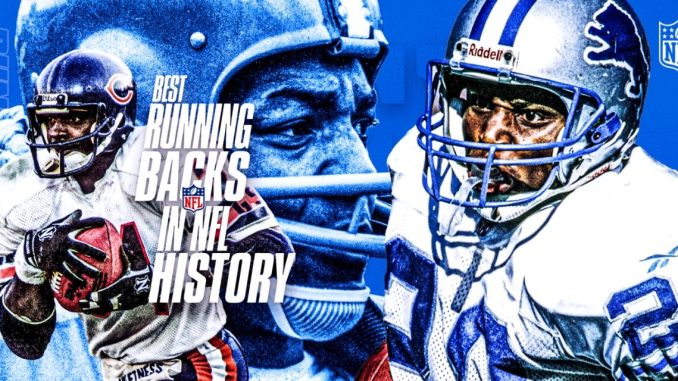
Highlights
- Stats often only tell part of the story when determining the greatest NFL running backs of all time.
- Prioritizing performance relative to era and how players would fare with today’s advancements in medicine and technology is a key factor of this list.
- GIVEMESPORT presents the 15 best running backs in NFL history.
Since the NFL’s inception over 100 years ago, there have been countless gifted running backs to grace the gridiron. From Red Grange to Derrick Henry, the position is as storied as any. However, simply acknowledging great players isn’t enough. For many fans, there is this visceral urge to compare and contrast great players to determine who is the best of them all.
Ranking players across generations is an imperfect science, but it’s important to maintain a consistent criteria. Firstly, these players are being ranked based on their performance relative to their era. Of course, the athletes of today are far better than those who took the field 50 years ago, but it’s important to account for the various advantages of modern medicine and technology.
How would Jim Brown play if he had access to today’s training methods? How well would Emmitt Smith’s body have held up behind a lesser offensive line in the leather helmet days?
These questions are intriguing, but they are merely hypotheticals that aren’t falsifiable, making them of little value to this conversation. Due to the position’s shorter shelf life, there will be a greater emphasis placed on prime performance. Those who sustained high-level play for longer will still be rewarded, but longevity must act as a supplement for peak performance, not a substitute.
A running back’s primary objective is to take handoffs from the quarterback, but that’s only part of the job description. While rushing prowess is still the main criterion, those who provide value as pass catchers as well as in pass protection get a boost.
Team success takes a bit of a backseat, as there’s only so much one player can do. Many of the players on this list have one or no championships, but this is a greater reflection of what was around them rather than their individual ability. Surrounding talent matters and will be factored into every running back’s ranking. Without further ado, here are the 15 greatest running backs of all time.
15 best quarterbacks in NFL history, ranked
Patrick Mahomes isn’t yet the best quarterback in NFL history, but he’s rapidly climbing the list. Check out GIVEMESPORT’s top 15 QBs.
15 Tony Dorsett
Dorsett was one of the first great Cowboys rushers
While Emmitt Smith virtually erased Tony Dorsett from the Dallas Cowboys record books, Dorsett remains one of the all-time greats. Standing just 5’11″, 192 pounds, he wasn’t big enough to be a bruiser, but what Dorsett lacked in size, he more than made up for his with speed and smoothness.
|
Tony Dorsett Career Stats |
||
|---|---|---|
|
Stat |
Regular season |
Playoffs |
|
Games |
173 |
17 |
|
Rushing Yards |
12,739 |
1,383 |
|
Yards Per Carry |
4.3 |
4.6 |
|
Rushing Touchdowns |
77 |
9 |
|
Receptions |
398 |
46 |
|
Receiving Yards |
3,554 |
403 |
|
Receiving Touchdowns |
13 |
1 |
|
Fumbles |
90 |
12 |
Whereas most running backs made their money running between the tackles and executing the play as it was designed, Dorsett made a living coloring outside the lines. His free-flowing style allowed him to create plays from scratch and manufacture his own offense.
Dorsett had a knack for avoiding defenders. He wouldn’t dance around and look to break ankles. Instead, he relied on subtle movements to narrowly avoid tacklers. Defenders could get their hands on Dorsett, but his slight changes in speed and direction made it difficult to bring him down.
Most 192-pound running backs wouldn’t dream of making the Hall of Fame, especially when the game had as few safety measures as it did in the 1970s. Dorsett, though, wasn’t like most backs. Not only did he become a brilliant running back and one of the premier players in the league, but his contact avoidance allowed him to maintain high-level performance into his 30s.
14 Curtis Martin
Martin was a steady force in the Jets backfield
Few backs epitomize consistency the way Curtis Martin did throughout his career. He surpassed 1,000 rushing yards and 1,400 yards from scrimmage in each of his first ten seasons. Although Martin’s claim for this spot is aided by longevity, his case wouldn’t be nearly as strong had it not been for his rushing title in 2004.
|
Curtis Martin Career Stats |
||
|---|---|---|
|
Stat |
Regular season |
Playoffs |
|
Games |
168 |
10 |
|
Rushing Yards |
14,101 |
795 |
|
Yards Per Carry |
4.0 |
4.4 |
|
Rushing Touchdowns |
90 |
8 |
|
Receptions |
484 |
37 |
|
Receiving Yards |
3,329 |
305 |
|
Receiving Touchdowns |
10 |
0 |
|
Fumbles |
29 |
3 |
At 31, an age where most backs are either shells of their former selves or out of the league entirely, Martin put together a career-best 1,697 yards and 1,942 yards from scrimmage to go with 14 total touchdowns. Martin’s career lacks the peak of others on this list, and even some left off it, but his prime lasted for ten seasons, and he was still improving in his 30s.
Martin had a bit of everything. He had sustained success in the NFL and topped out as the uncontested best running back in the league. Ranked sixth all-time in career rushing yards, Martin has become an underrated player.
He is rarely discussed with the all-time greats and even those who trail him in major statistical categories. Martin’s wasn’t as dominant as those at the top of the list, but his career in its totality warrants a top-15 spot.
13 Thurman Thomas
Thomas led the Bills to four consecutive Super Bowls
In a way, Thurman Thomas was ahead of his time. As a savvy receiver, he provided serious value in the passing game in addition to his rushing ability. This versatility made Thomas the workhorse of the Buffalo Bills’ high-flying offense. He led the league in yards from scrimmage for four consecutive years, three of which saw Thomas’s Bills reach the Super Bowl.
|
Thurman Thomas Career Stats |
||
|---|---|---|
|
Stat |
Regular season |
Playoffs |
|
Games |
182 |
21 |
|
Rushing Yards |
12,074 |
1,442 |
|
Yards Per Carry |
4.2 |
4.3 |
|
Rushing Touchdowns |
65 |
16 |
|
Receptions |
472 |
76 |
|
Receiving Yards |
4,458 |
672 |
|
Receiving Touchdowns |
23 |
5 |
|
Fumbles |
50 |
9 |
Thomas’s legacy ultimately suffers from his team coming up short in the big game. While this specific list doesn’t weigh team success heavily, in the eyes of fans, winning a Super Bowl is paramount.
Super Bowl 25 had the chance to be Buffalo and Thomas’ crowning moment. The first-team All-Pro amassed 190 yards and a touchdown, only for Scott Norwood to push what would’ve been the game-winning field goal wide right.
Had the kick gone through, Thomas would’ve ended his career as one of the few running backs to win an MVP, Offensive Player of the Year, and Super Bowl MVP. Nonetheless, Thomas’s career was much more than being part of a team that never quite got over the hump. He recorded eight straight 1,000-yard seasons and finished his career 10th all-time in yards from scrimmage for running backs.
12 Terrell Davis
Davis had one of the greatest peaks in NFL history
Terrell Davis’s career was short-lived; he spent only seven years in the NFL and played in more than eight games in four of them. In most cases, this wouldn’t be a large enough sample size to make such a distinguished list. Davis, however, is an exception to the rule. While he didn’t burn for as long as some of his contemporaries, he shined brighter than nearly all of them.
|
Terrell Davis Career Stats |
||
|---|---|---|
|
Stat |
Regular season |
Playoffs |
|
Games |
78 |
8 |
|
Rushing Yards |
7,607 |
1,140 |
|
Yards Per Carry |
4.6 |
5.6 |
|
Rushing Touchdowns |
60 |
12 |
|
Receptions |
169 |
19 |
|
Receiving Yards |
1,280 |
131 |
|
Receiving Touchdowns |
5 |
0 |
|
Fumbles |
20 |
4 |
Davis’s run from 1995-1998 is one of the best ever seen from the running back position. In those four seasons, he rushed for 6,413 yards and 56 touchdowns and won a Super Bowl and league MVP in 1998. The career stats aren’t overly impressive, but Davis’ career accolades still stack up well with other greats. Three first-team All-Pro selections, two Offensive Player of the Year awards, two Super Bowl rings, and an MVP puts him in an exclusive group.
In seven years, Davis accomplished more than most do in careers spanning twice as long. His early-career greatness was enough to make him a worthy selection. That said, longevity isn’t completely disregarded in the construction of this list. As a result, Davis takes a lower spot.
11 Gale Sayers
Sayers was a do-it-all back
Before Walter Payton became the most iconic player to suit up for the Chicago Bears, Gale Sayers was among the most exciting players in the league. At a time when the game was more positionless, Sayers did a little bit of everything.
|
Gale Sayers Career Stats |
||
|---|---|---|
|
Stat |
Regular season |
Playoffs |
|
Games |
68 |
0 |
|
Rushing Yards |
4,956 |
0 |
|
Yards Per Carry |
5.0 |
0 |
|
Rushing Touchdowns |
39 |
0 |
|
Receptions |
112 |
0 |
|
Receiving Yards |
1,307 |
0 |
|
Receiving Touchdowns |
9 |
0 |
|
Fumbles |
34 |
0 |
As a rookie, he scored 14 touchdowns on the ground, caught six, and returned one punt and one kickoff for a score, resulting in a whopping 22 touchdowns, a record that still stands today. Versatility in the league was at a premium, and Sayers embodied that to a tee. He finished his career with eight special teams touchdowns and was the league’s all-time leader in kick return yardage at the time of his retirement.
Unfortunately, Sayers’ career came to a halt after injuries took their toll. He played in only four games after his age-26 season and retired at the ripe age of 28. Sayers is a prime example of a player who never reached his full potential.
With only four full seasons to show, he doesn’t have the body of work that many others on this list do. Still, on a per-touch basis, whether it be a handoff, reception, or kick return, few have been better than Sayers.
10 Earl Campbell
Campbell’s early-career dominance cements him as one of the greats
Earl Campbell hit the ground running in the NFL. In his first three seasons, he won three Offensive Player of the Year awards, three rushing titles, and the 1979 MVP.
Listed at 5’11″, 232, Campbell was a unit with a thick, muscular build and an exceptionally strong lower body. However, his size and strength didn’t come at the expense of speed and explosiveness. When Campbell had reached full speed, defenders were at his mercy.
|
Earl Campbell Career Stats |
||
|---|---|---|
|
Stat |
Regular season |
Playoffs |
|
Games |
115 |
6 |
|
Rushing Yards |
9,407 |
420 |
|
Yards Per Carry |
4.3 |
3.1 |
|
Rushing Touchdowns |
74 |
4 |
|
Receptions |
121 |
5 |
|
Receiving Yards |
806 |
45 |
|
Receiving Touchdowns |
0 |
0 |
|
Fumbles |
43 |
6 |
Campbell’s running style embodied violence and brutality. Taking him down on first contact was nearly impossible, and it often took a committee of defenders to eventually drag Campbell down. Physically speaking, Campbell was a man among boys and punished opposing defenses, but his punishing running style also took a psychological toll on opponents, wearing them down as the game progressed.
Sadly, Campbell’s style of play wasn’t sustainable. After his historic start, Campbell recorded just two more 1,000-yard seasons and was out of the league by the end of his eighth season. Still, Campbell more than left his mark on the sport and remains one of the greatest running backs of all time.
9 O.J. Simpson
Simpson made five consecutive All-Pro teams
It’s challenging to discuss O.J. Simpson’s legacy without mentioning his off-field actions. His role in one of the most infamous murder trials of the 20th century has made his football career an afterthought. Strictly focusing on on-field performance, Simpson is wholly deserving of an admission.
|
O.J. Simpson Career Stats |
||
|---|---|---|
|
Stat |
Regular season |
Playoffs |
|
Games |
135 |
1 |
|
Rushing Yards |
11,236 |
49 |
|
Yards Per Carry |
4.7 |
3.3 |
|
Rushing Touchdowns |
61 |
0 |
|
Receptions |
203 |
3 |
|
Receiving Yards |
2,142 |
37 |
|
Receiving Touchdowns |
14 |
1 |
|
Fumbles |
62 |
0 |
Simpson’s career got off to a rather slow start, which is uncharacteristic for a running back. Once he found his stride, though, he was an unstoppable force. From 1972-1976, Simpson led the league in rushing four times and in touchdowns twice. Simpson also maintained outstanding efficiency despite the high usage, averaging over five yards per carry for three of his four rushing titles.
The 1973 season saw Simpson at the peak of his powers. He ran for 2,003 yards on six yards per attempt and won MVP. Most impressive of all, Simpson did this in only 14 games. His per-game averages extrapolated to a 17-game sample would give him 2,433 yards and 14 touchdowns. This wasn’t even his best season from a total yardage standpoint, as he recorded 2,243 yards from scrimmage and 23 total touchdowns in 1975.
No one should sympathize with Simpson, as his fall from grace was entirely self-inflicted. As just a running back, though, he was one of the defining talents of his time and his greatness on the gridiron is hard to ignore 50 years later.
8 Eric Dickerson
Dickerson holds the all-time single-season rushing yards record
It was evident early in Eric Dickerson’s career that he was destined for greatness. As a rookie, he led the league with 1,808 rushing yards and 2,212 yards from scrimmage. He then followed it up with an even more impressive second season where he broke the single-season rushing yards record with 2,105 yards, which remains unbroken 40 years later.
|
Eric Dickerson Career Stats |
||
|---|---|---|
|
Stat |
Regular season |
Playoffs |
|
Games |
146 |
7 |
|
Rushing Yards |
13,259 |
724 |
|
Yards Per Carry |
4.4 |
4.9 |
|
Rushing Touchdowns |
90 |
3 |
|
Receptions |
281 |
19 |
|
Receiving Yards |
2,137 |
91 |
|
Receiving Touchdowns |
6 |
1 |
|
Fumbles |
78 |
7 |
A former track star, Dickerson’s running style mirrored that of a sprinter. He ran tall and upright in the open field and used his long strides to pull away from defenders. Despite his lankier build, Dickerson was an incredibly fluid runner who could stop and change direction at will.
If Dickerson were guilty of any crime, it would be that he was so great so early on in his career it set an impossible standard. He recorded 4,456 yards from scrimmage in his first two seasons, and that just simply wasn’t sustainable. He still had his moments, going on to lead the league in rushing twice more, but Dickerson was forever chasing his 1984 self.
Shortly after his departure from Los Angeles, Dickerson hit a wall and spent the final years of his career in a limited role. As far as peaks go, no ranking for Dickerson should be considered too high. His four best seasons could go toe-to-toe with anyone’s. Unfortunately, career greatness comes down to more than just your four best years, which keeps Dickerson out of the top five.
7 Adrian Peterson
Peterson was the best running back of his generation
Peterson may have been among the last of a dying breed. The league is churning out fewer workhorse running backs by the year, and with Peterson’s legendary 2012 season marking the last time a running back won the MVP, it’s fair to question if this is the new norm for the position.
|
Adrian Peterson Career Stats |
||
|---|---|---|
|
Stat |
Regular season |
Playoffs |
|
Games |
184 |
5 |
|
Rushing Yards |
14,918 |
412 |
|
Yards Per Carry |
4.6 |
3.6 |
|
Rushing Touchdowns |
120 |
5 |
|
Receptions |
305 |
6 |
|
Receiving Yards |
2,474 |
54 |
|
Receiving Touchdowns |
6 |
2 |
|
Fumbles |
49 |
3 |
Even as the league began to devalue running backs, Peterson’s impact was undeniable. From 2008 to 2015, he was widely regarded as the best back in the league, with only injuries and suspensions holding him back. Teams have scoured the NFL Draft in hopes of finding the next Peterson, to no avail. It’s been almost 20 years since his draft day, and no one has come close to matching his career in its totality.
Peterson’s masterful running back play, consisting of great size, vision, and agility, made him a dominant force on the field and a talent of a generation. Playing in a total of four games at his age 29 and 31 seasons stopped Peterson from reaching even greater heights from a legacy standpoint. Still, he’s more than deserving of a place on this list.
6 Marshall Faulk
Faulk’s versatility headlined the Greatest Show on Turf
While Dickerson went from the Rams to the Indianapolis Colts, Marshall Faulk started his career in Indianapolis before joining the Rams. In St. Louis, Faulk would unlock his full potential, winning three consecutive Offensive Player of the Year awards and the 2000 MVP.
|
Marshall Faulk Career Stats |
||
|---|---|---|
|
Stat |
Regular season |
Playoffs |
|
Games |
176 |
12 |
|
Rushing Yards |
12,279 |
602 |
|
Yards Per Carry |
4.3 |
3.6 |
|
Rushing Touchdowns |
100 |
6 |
|
Receptions |
767 |
52 |
|
Receiving Yards |
6,875 |
519 |
|
Receiving Touchdowns |
36 |
2 |
|
Fumbles |
36 |
0 |
Faulk’s game was defined by efficiency and versatility. Though he never eclipsed 1,400 rushing yards in a season, he led the league in yards per carry in all three of his Offensive Player of the Year-winning seasons. He didn’t get the same usage in the run game as other backs, but he didn’t need to.
This isn’t to suggest Faulk couldn’t be a workhorse; it was just in a different way. Faulk played a massive role in the passing game, even surpassing 1,000 receiving yards in his MVP season. In a way, Faulk helped redefine the running back position.
As the league was beginning to embrace the air raid offense, old-school running backs were in danger of going out of style. With a Hall of Fame quarterback like Kurt Warner, playing through the run game just wasn’t sensible. Faulk took on a greater role as a pass catcher and flourished, allowing him to continue being a focal point of the offense.
The idea that great running back play doesn’t translate to postseason success has gained traction in recent years, with fewer teams looking to build around the position. Faulk is the last running back to win a Super Bowl the same year as being named first-team All-Pro. With each passing year, fans become more appreciative of his game and ability to elevate his team.
5 LaDainian Tomlinson
Tomlinson’s greatness shouldn’t go overlooked
The then San Diego Chargers’ lightning bolt was a fitting emblem to describe LaDainian Tomlinson’s game. He was explosive and powerful, and on the field, he was a force of nature.
Tomlinson made five Pro Bowls and five All-Pro teams, as well as winning league MVP in 2006. His whopping 2,323 yards from scrimmage and 31 total touchdowns make for one of the greatest single seasons in league history, regardless of position.
| LaDainian Tomlinson Career Stats | ||
|---|---|---|
| Stat | Regular season | Playoffs |
| Games | 170 | 10 |
| Rushing Yards | 13,684 | 468 |
| Yards Per Carry | 4.3 | 3.6 |
| Rushing Touchdowns | 145 | 6 |
| Receptions | 624 | 25 |
| Receiving Yards | 4,772 | 176 |
| Receiving Touchdowns | 17 | 1 |
| Fumbles | 31 | 2 |
Tomlinson’s legacy has suffered to no fault of his own. Emmitt Smith played for America’s team and won multiple Super Bowls, Barry Sanders was flashy and exhilarating to watch, and Walter Payton was a part of the 1985 Bears and has an award named after him. Tomlinson was an incredible, breathtaking talent, but he wasn’t quite as iconic. His teams seldom did damage in the postseason, and his style of play, while effective, wasn’t flashy.
Even if his name doesn’t hold the same weight as others, Tomlinson’s status as one of the greatest backs ever shouldn’t be in dispute. He was one of the best offensive weapons of this millennium, and some of his records will likely stand for many years.
4 Emmitt Smith
Smith’s illustrious career led to multiple records
Emmitt Smith’s ranking could go a few different ways. On one hand, he’s the league’s all-time leading rusher, a record that looks more unbreakable by the year. Conversely, he was blessed with arguably the best situation of any player on this list.
|
Emmitt Smith Career Stats |
||
|---|---|---|
|
Stat |
Regular season |
Playoffs |
|
Games |
226 |
17 |
|
Rushing Yards |
18,355 |
1,586 |
|
Yards Per Carry |
4.2 |
4.5 |
|
Rushing Touchdowns |
164 |
19 |
|
Receptions |
545 |
46 |
|
Receiving Yards |
3,224 |
342 |
|
Receiving Touchdowns |
11 |
2 |
|
Fumbles |
61 |
4 |
Isolating Smith’s performance is easier said than done. No one is suggesting that any average running back could become the all-time leading rusher behind that offensive line, but it’s hard to deny Smith was a beneficiary of his surrounding talent. Smith, Troy Aikman, Michael Irvin, and an offensive line filled with Pro Bowlers and All-Pros gave opposing defenses all they could handle and then some.
Smith’s consistency is unrivaled. He recorded 11 straight 1000-yard seasons and had at least 900 in 14 of his 15 years. Yes, much of this consistency can be attributed to his situation, but Smith deserves some credit of his own for his awareness as a runner. He knew when to lower his shoulder and absorb contact, but he also had a knack for avoiding unnecessary hits.
As far as career statistics and accomplishments go, Smith is the undisputed No. 1. It would be easier to name what Smith didn’t win during his career than what he did. Three Super Bowls, a Super Bowl and regular season MVP, and an Offensive Rookie of the Year make for quite the resume.
At this stage of the list, the margins get razor-thin. Who goes where comes down to the smallest discrepancies. For Smith, the star-studded offensive line makes his career success slightly less impressive than that of the remaining players.
3 Barry Sanders
Sanders was a human highlight reel
Sports, especially those as punishing as American football, can be brutal and violent. Fans tune in to see the thrill of grown men crashing into one another. However, Barry Sanders’ game wasn’t reminiscent of the typical bulldozing back.
He played the game of football like a musician plays an instrument; it was precise, detailed, and beautiful. Football at its best can be an art, and there has never been a better artist than Sanders.
|
Barry Sanders Career Stats |
||
|---|---|---|
|
Stat |
Regular season |
Playoffs |
|
Games |
153 |
6 |
|
Rushing Yards |
15,269 |
386 |
|
Yards Per Carry |
5.0 |
4.2 |
|
Rushing Touchdowns |
99 |
1 |
|
Receptions |
352 |
21 |
|
Receiving Yards |
2,921 |
111 |
|
Receiving Touchdowns |
10 |
3 |
|
Fumbles |
41 |
1 |
Sanders was nearly impossible to bring down on first contact. His low center of gravity and footwork allowed him to weave around defenders with ease. Sanders racked up serious hardware, winning three Offensive Player of the Year awards and a Co-MVP in 1997.
Sanders was a departure from the typical downhill rusher. He looked to dance and create his own holes, sometimes to his own detriment. This play style, though, allowed Sanders to be a one-man offense. With the ball in his hands, he could make magic happen.
For those lucky enough to watch Sanders, his career is often discussed with a modicum of sorrow, for he walked away with a lot of juice left in the tank. With the Lions failing to surround Sanders with the necessary talent to contend, he lost his hunger and retired after his tenth season.
In a parallel universe where Sanders didn’t retire at age 30 following the 1998 season and continued his illustrious career, he is likely the unanimous greatest back of all time. In this universe, however, he just misses out on that top spot.
2 Walter Payton
Payton’s complete game made him the best running back of the Super Bowl era
Nearly 25 years after his death, Walter Payton’s legacy transcends the game of football. Thanks to the Walter Payton Man of the Year Award, given each year to an NFL player for his off-field work, Payton’s name illustrates what it means to be more than an athlete.
|
Walter Payton Career Stats |
||
|---|---|---|
|
Stat |
Regular season |
Playoffs |
|
Games |
190 |
9 |
|
Rushing Yards |
16,726 |
632 |
|
Yards Per Carry |
4.4 |
3.5 |
|
Rushing Touchdowns |
110 |
2 |
|
Receptions |
492 |
22 |
|
Receiving Yards |
4,538 |
178 |
|
Receiving Touchdowns |
15 |
0 |
|
Fumbles |
86 |
4 |
While Payton’s character and spirit make him a lionized player all these years later, none of that factored into his placement on this list. Payton was a true workhorse, leading the league in carries for four consecutive seasons and notching 300 carries in 10 of them.
Payton’s claim for the top spot is two-fold. He possessed one of the most complete skill sets the position has ever seen. In addition to being a great pure runner, he provided value as a pass catcher and in pass protection.
His prime also spanned over ten years. Payton burst onto the scene in the 1976 season and was still the Bears’ best offensive player on the legendary 1985 team and was the runner-up in MVP voting. It wasn’t until his age 34 season that he showed signs of decline.
Had the gap between Sanders and Payton’s rushing ability been greater, this wouldn’t have been enough, but given how close the two are from an accolades standpoint, Payton’s more complete game and longer career give him the slight edge at the second spot on this list.
1 Jim Brown
Brown stands alone as the greatest running back in league history
It was stated in the introduction that these running backs would be judged relative to era. Following that rubric, it’s difficult to give the top spot to anyone other than the late Jim Brown. With Brown’s all-encompassing resume and wire-to-wire dominance, one could argue he’s the greatest football player ever, regardless of position.
|
Jim Brown Career Stats |
||
|---|---|---|
|
Stat |
Regular season |
Playoffs |
|
Games |
118 |
4 |
|
Rushing Yards |
12,312 |
241 |
|
Yards Per Carry |
5.2 |
3.7 |
|
Rushing Touchdowns |
106 |
1 |
|
Receptions |
262 |
8 |
|
Receiving Yards |
2,499 |
99 |
|
Receiving Touchdowns |
20 |
0 |
|
Fumbles |
57 |
0 |
As an athlete, Brown was truly ahead of his time. At 6’2″, 232 pounds, he would be considered a massive running back in today’s game, let alone in the 1960s. Brown dominated throughout the entirety of his career, leading the league in rushing in eight of his nine years. He was awarded an MVP by the AP or UPI (United Press International) in four seasons, named a Pro Bowler nine times and a first-team All-Pro in eight.
It’s worth noting that Brown’s career took place before the adoption of the 16 and 17-game regular seasons. After Brown’s fourth year, the league moved from 12 games to 14, but the shorter seasons stopped him from having the all-time or per-year numbers he was capable of.
Had he played during a time with longer seasons and more rules to protect ball carriers, Brown likely would’ve finished his career with multiple unbreakable records.
How many professional athletes from 60 years ago would be able to compete if they were in their prime today? There’s no definitive answer, but you’d have to imagine it would be a brief list. Perhaps Wilt Chamberlain or Sandy Koufax would be the strongest bets. Brown is one of those anomalies. His athletic profile wouldn’t be far off from the average running back today. He achieved a level of dominance that has yet to be matched. Nearly 60 years after his final season, it’s safe to say there will never be another Jim Brown.
All stats courtesy of Pro Football Reference unless stated otherwise.
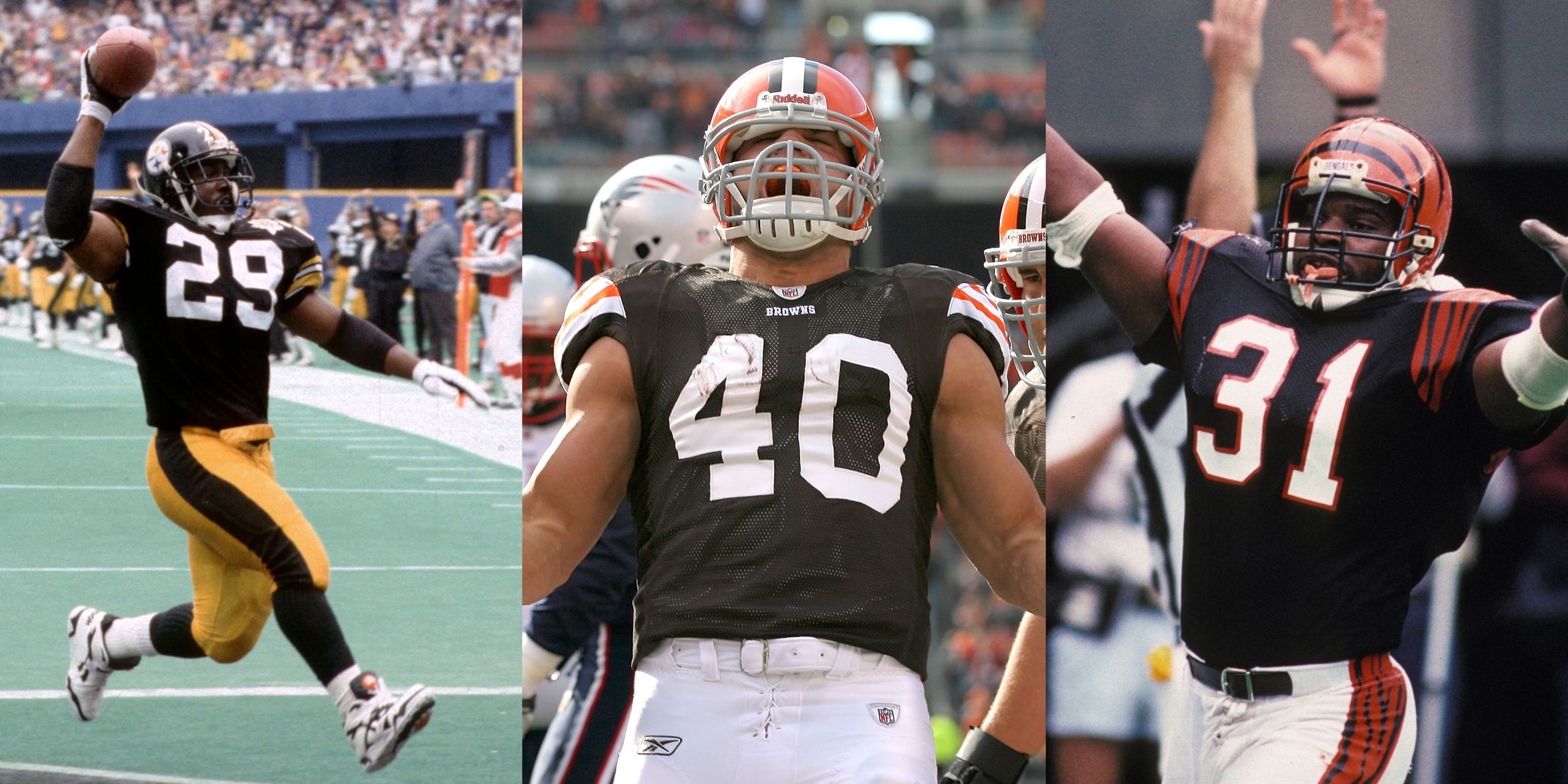
NFL one-hit wonders: Running back edition
Discover the NFL’s one-hit wonder running backs, from Olandis Gary to Peyton Hillis. Meteoric rises and swift falls in 100 years of NFL history.

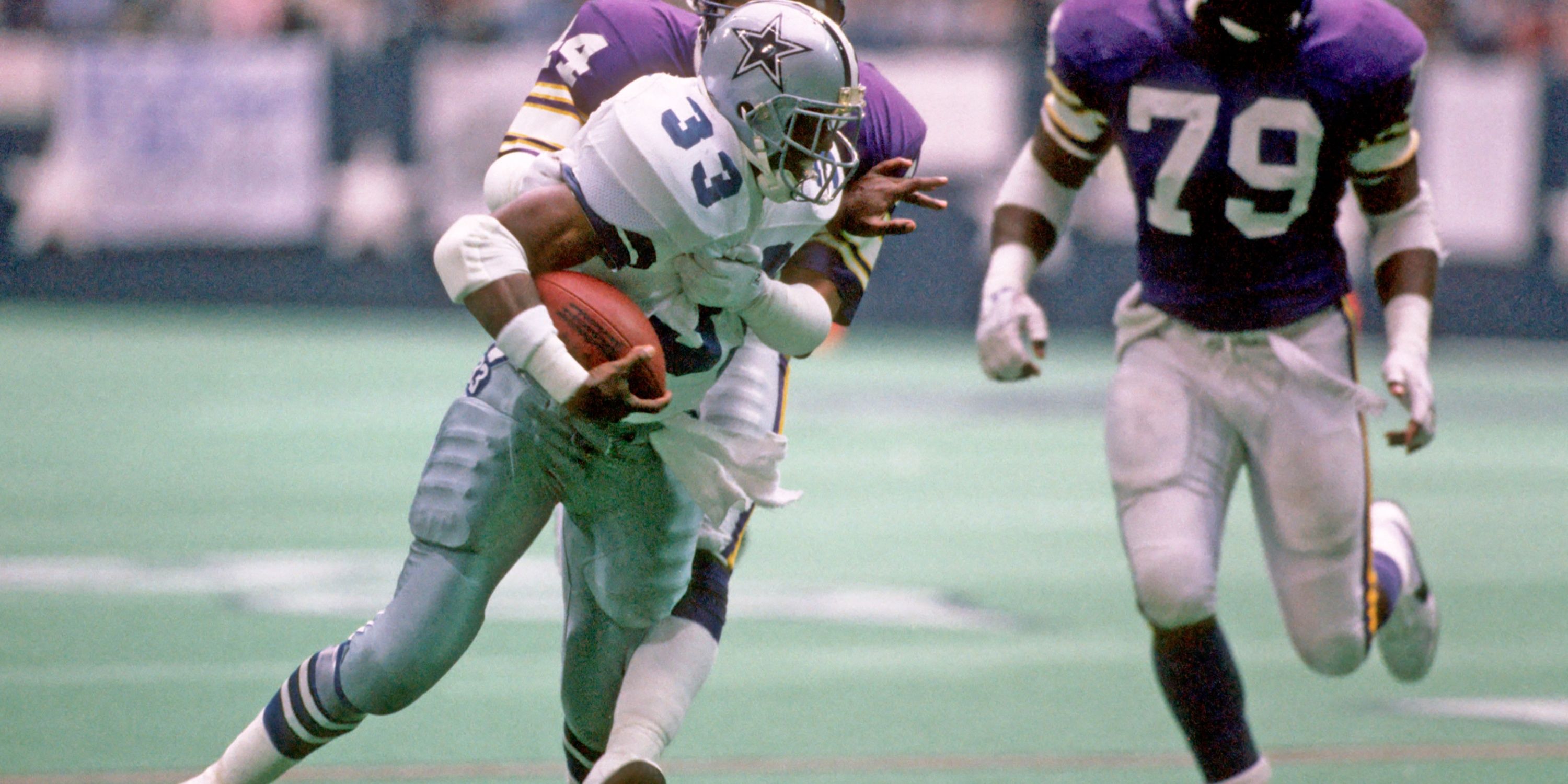
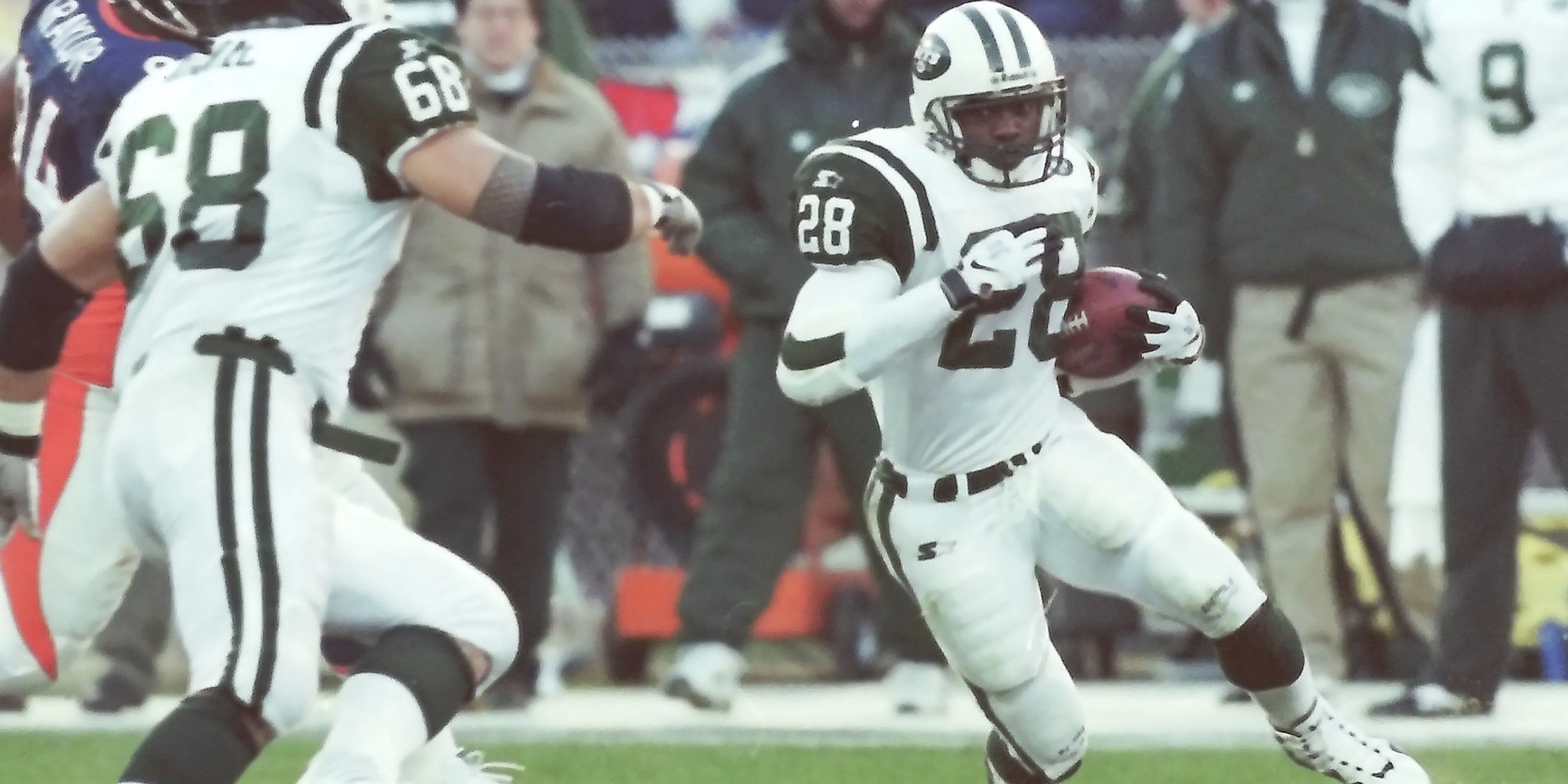
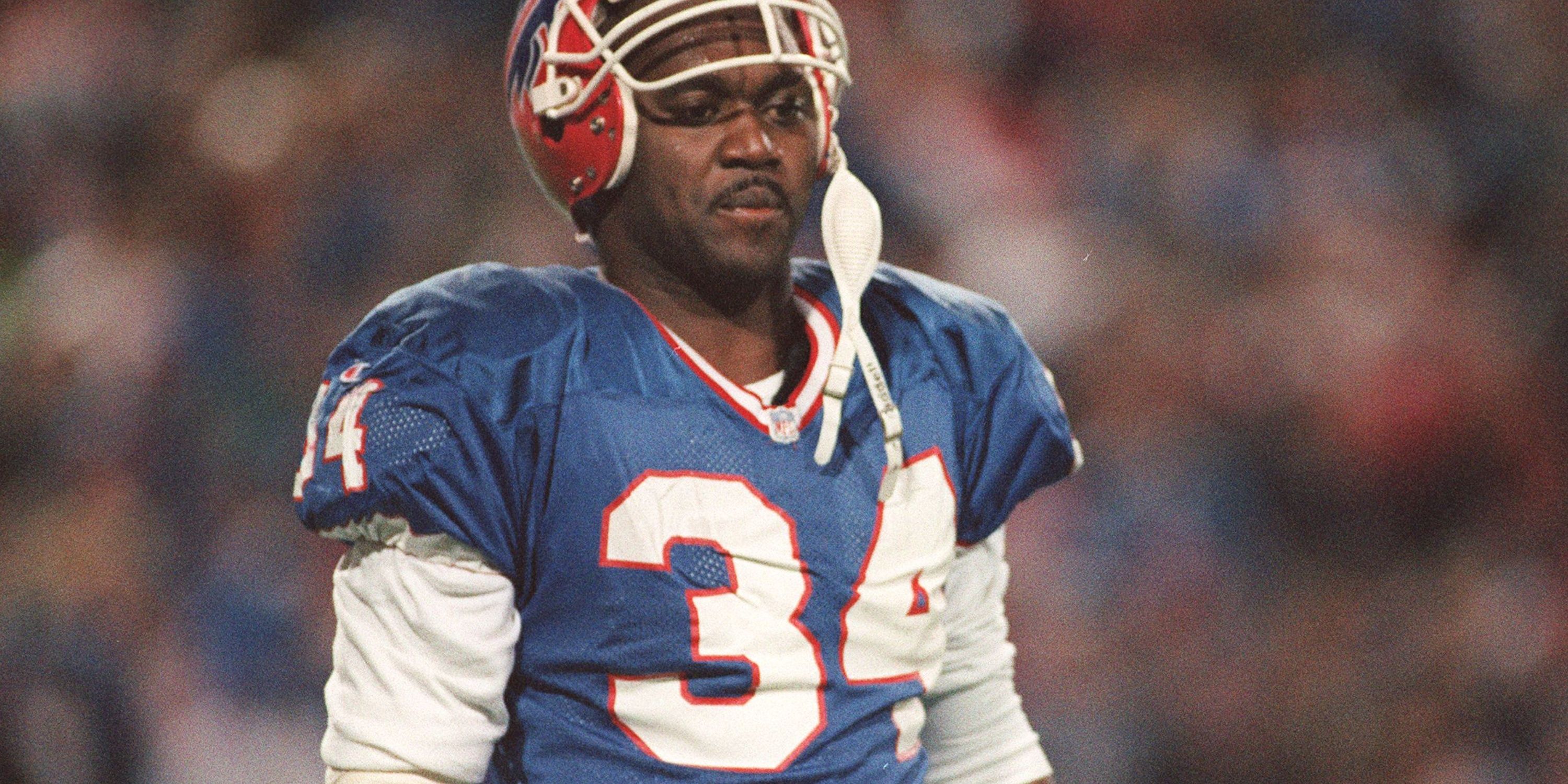
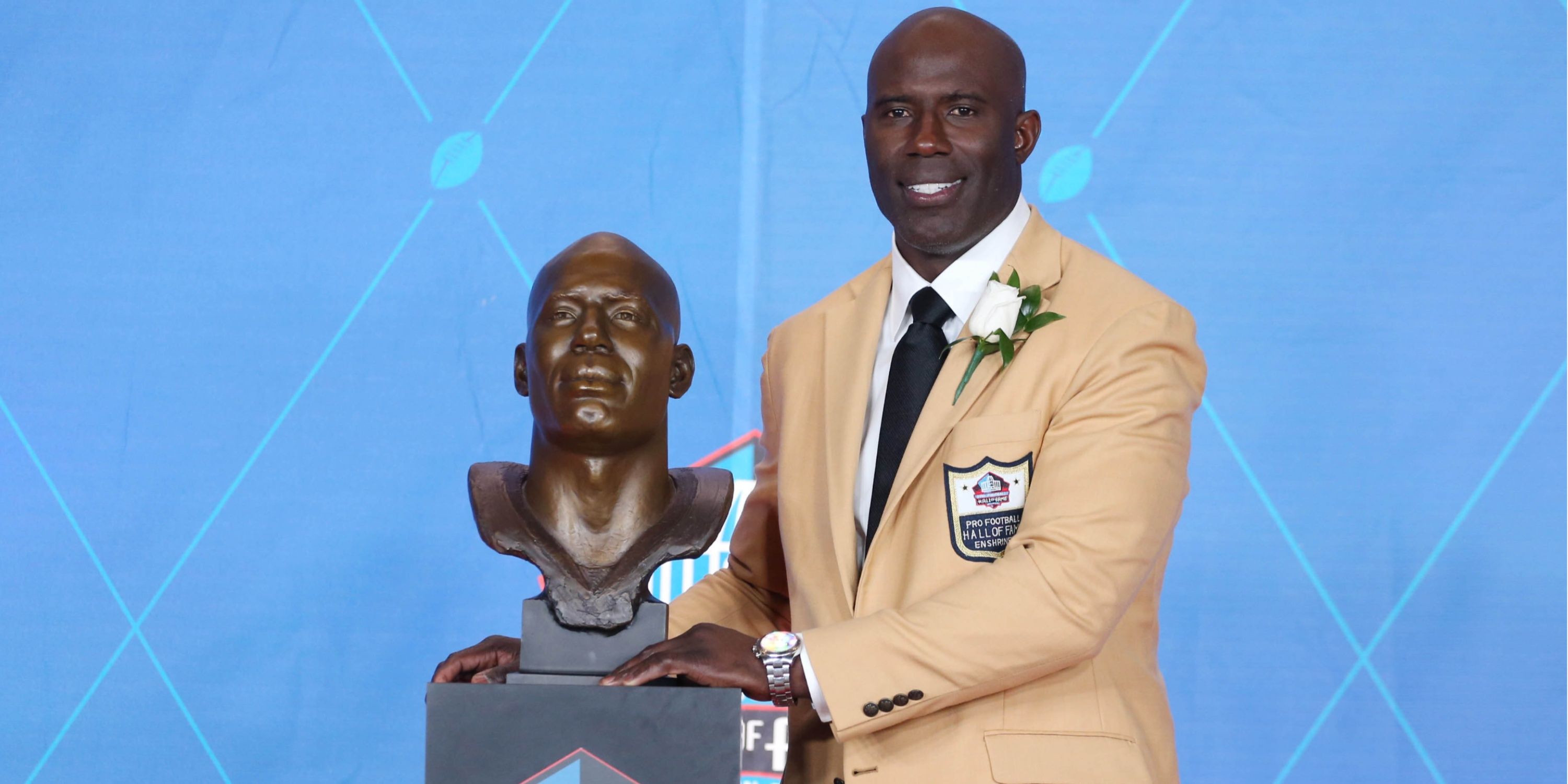
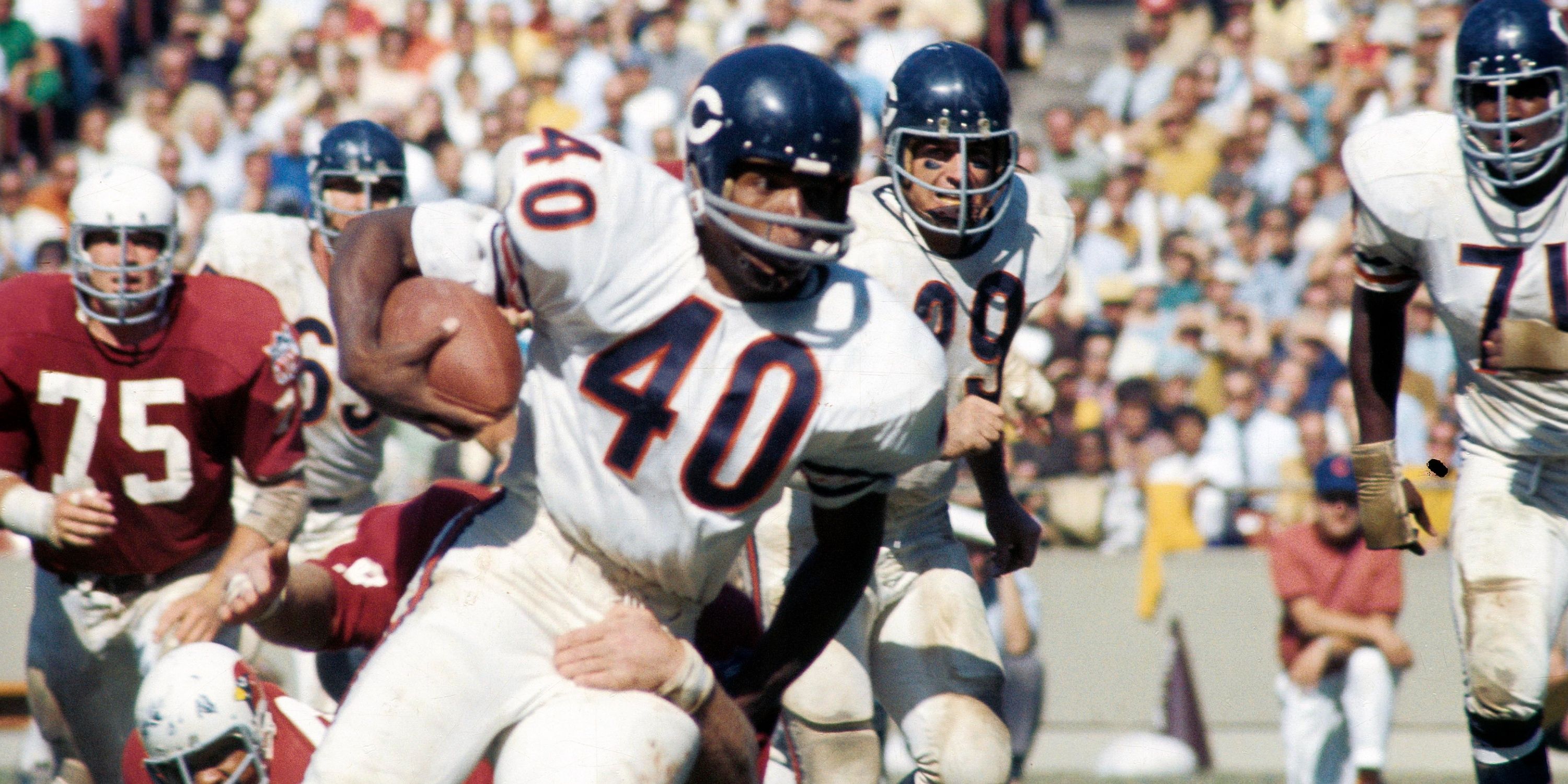
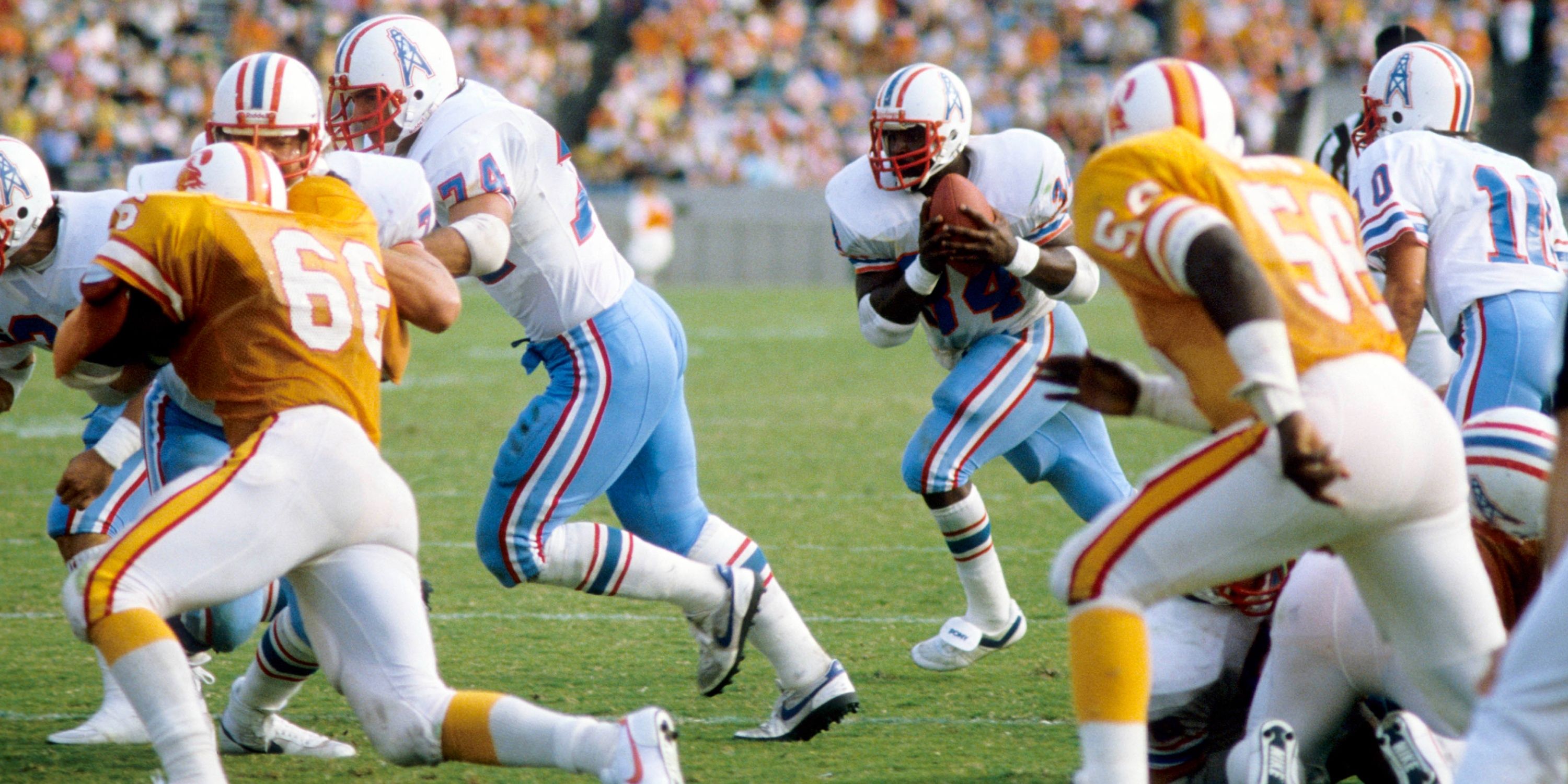
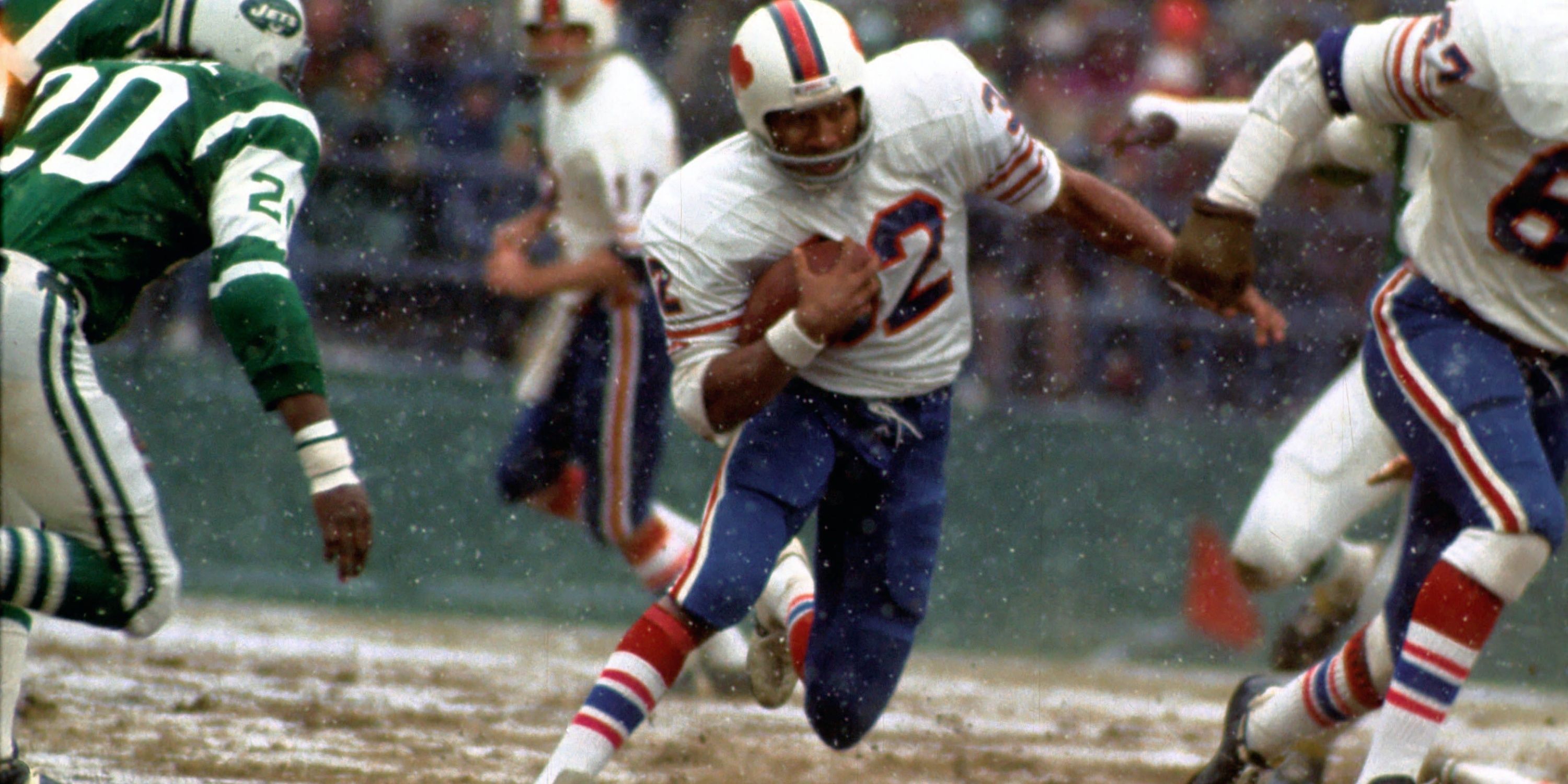
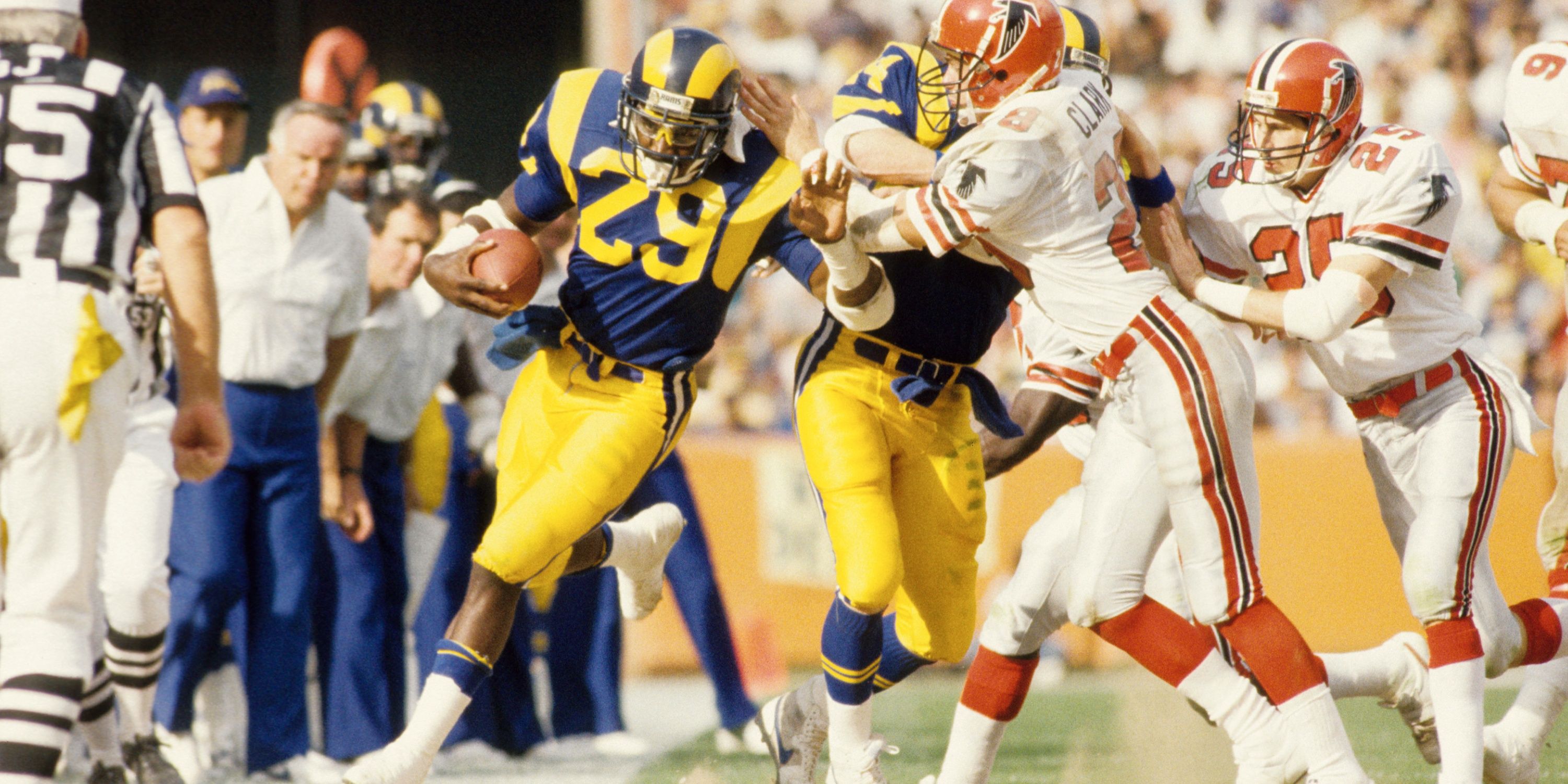
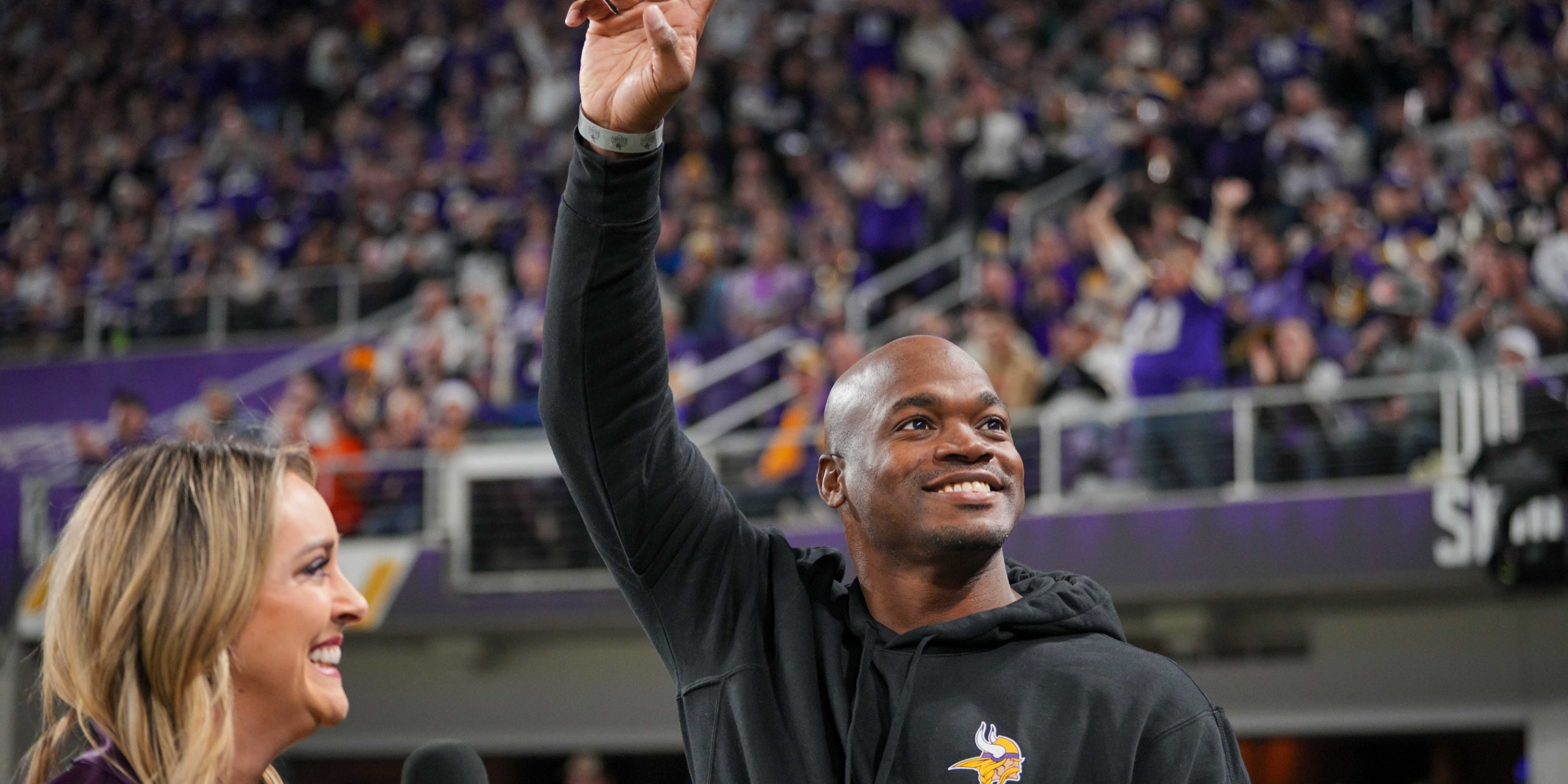
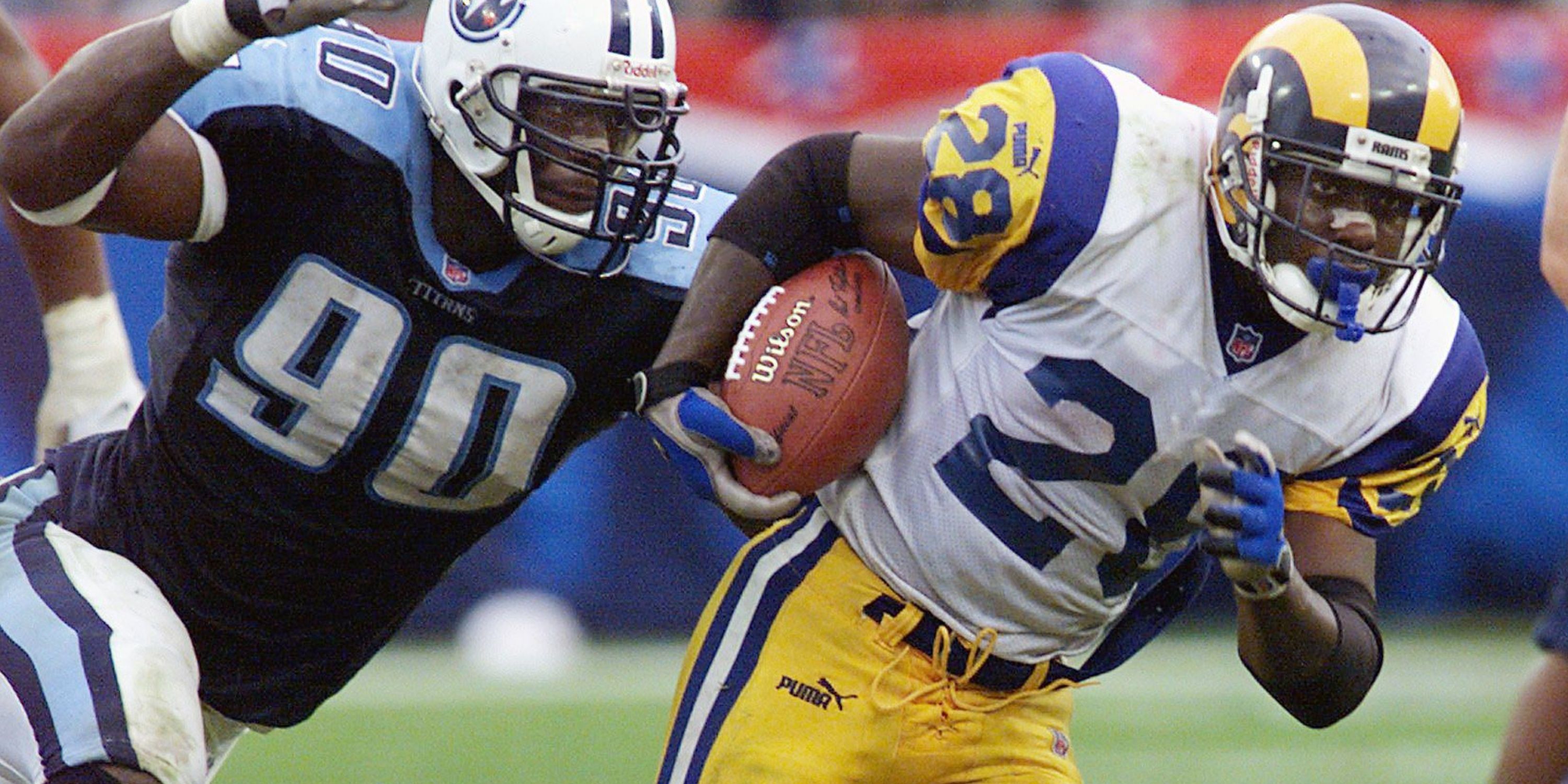
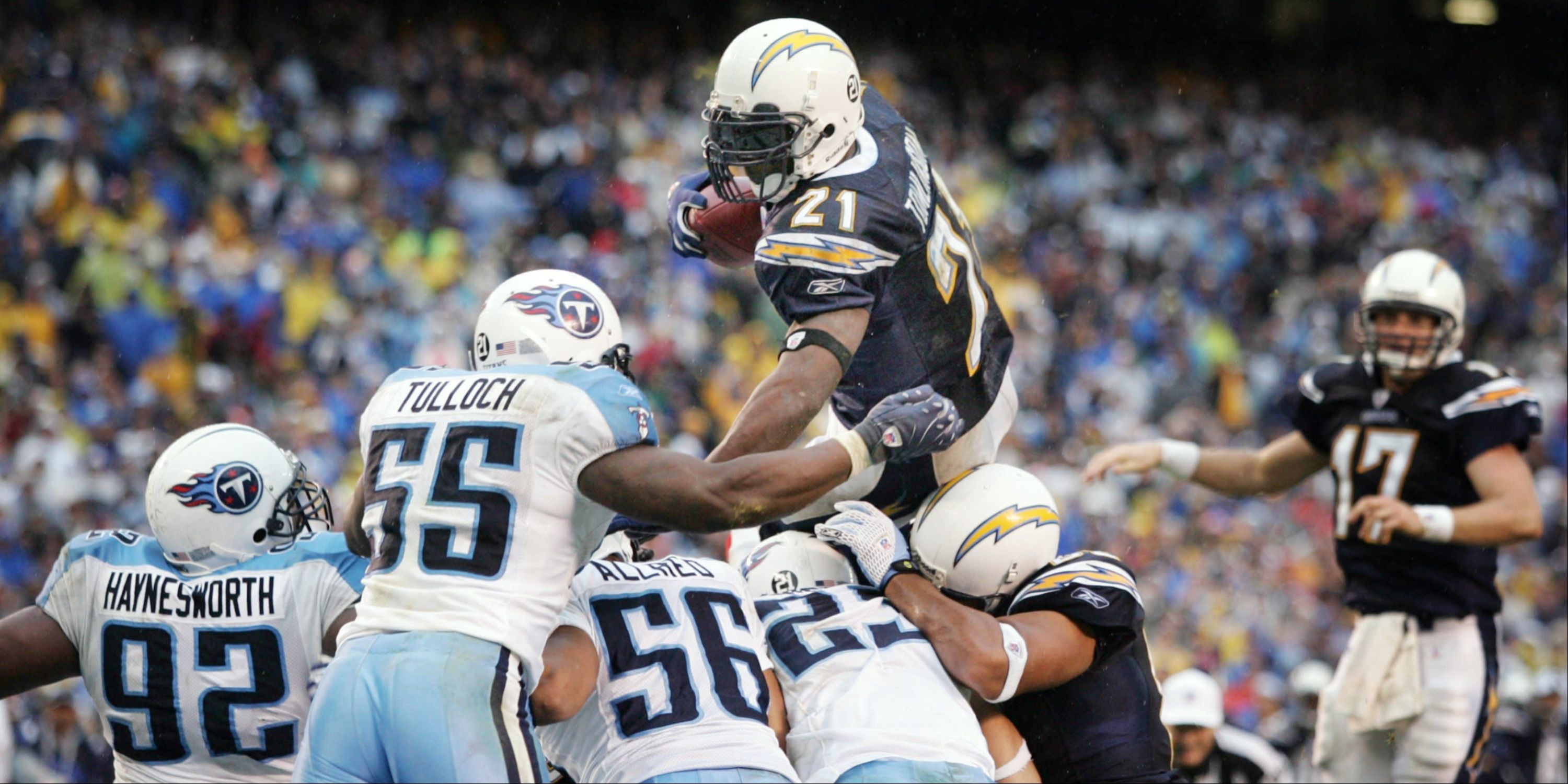
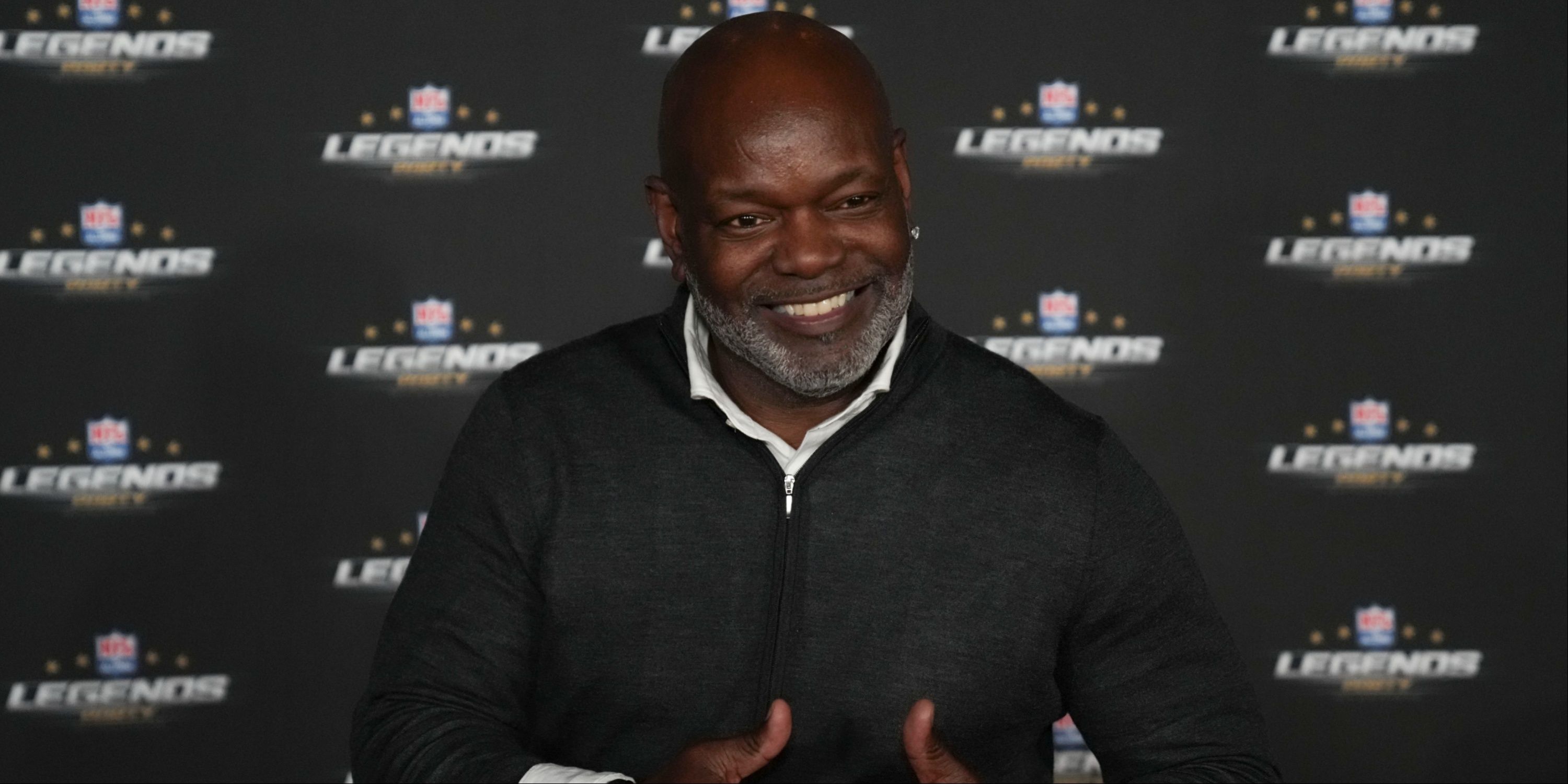
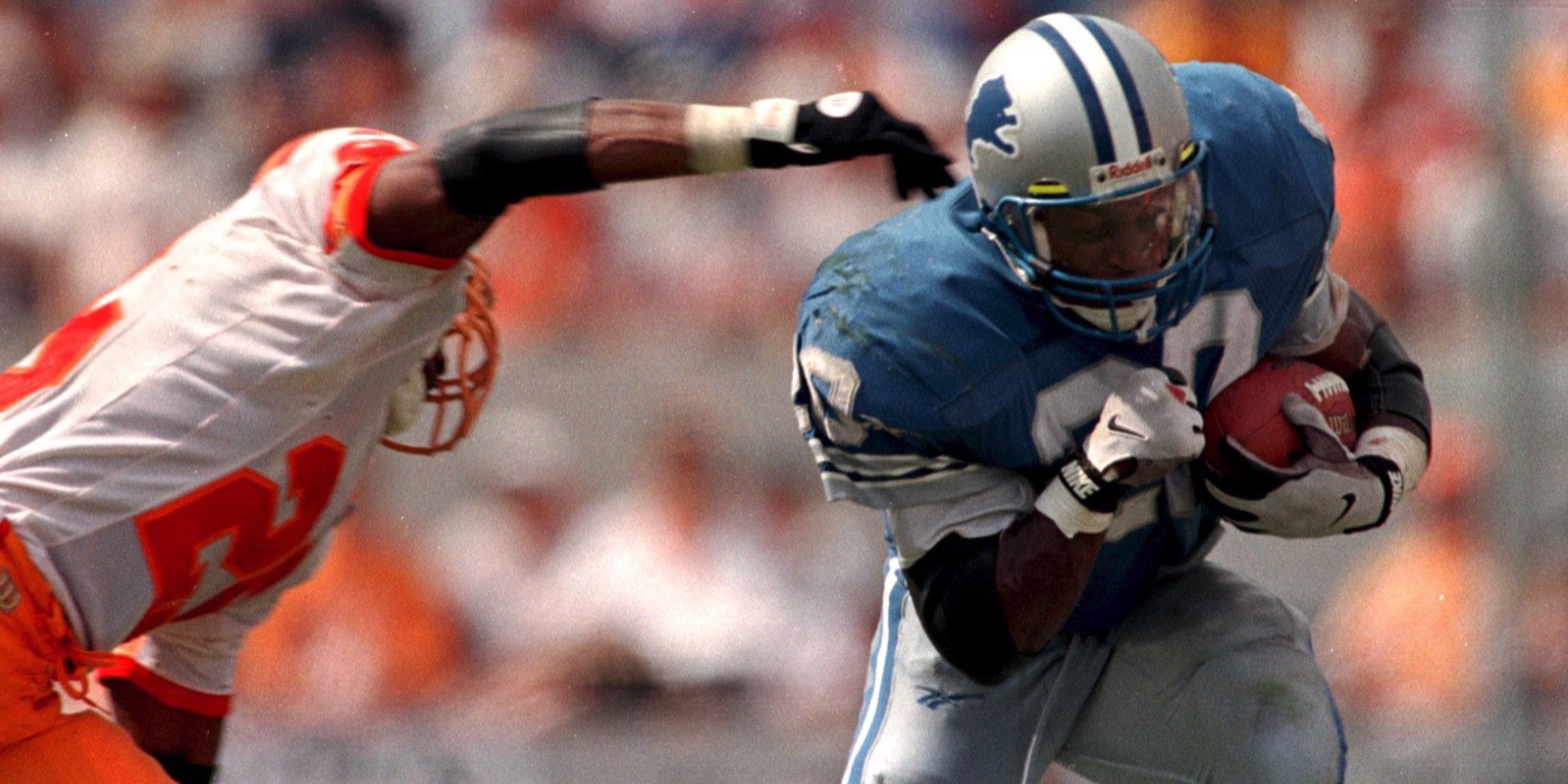
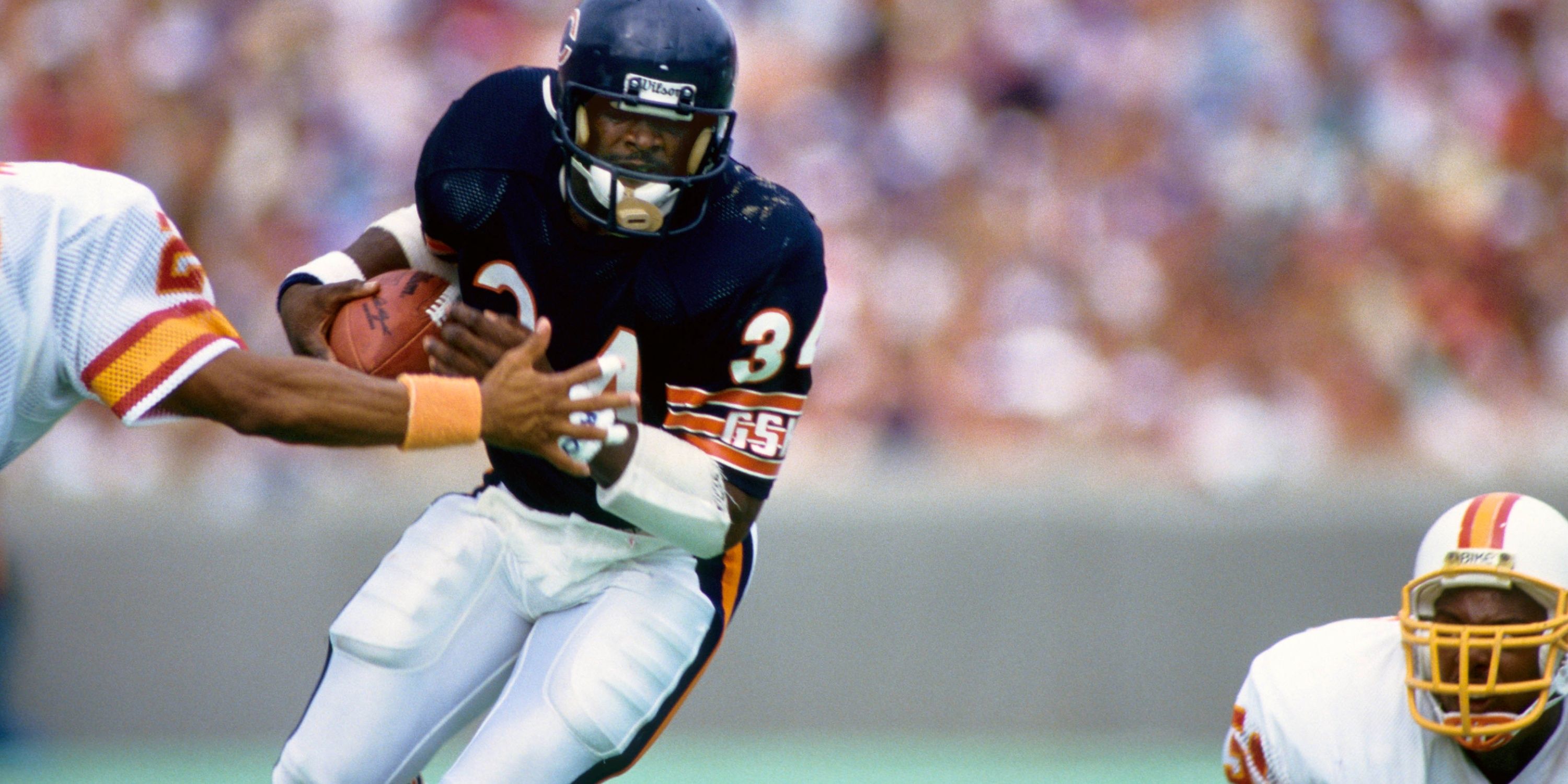
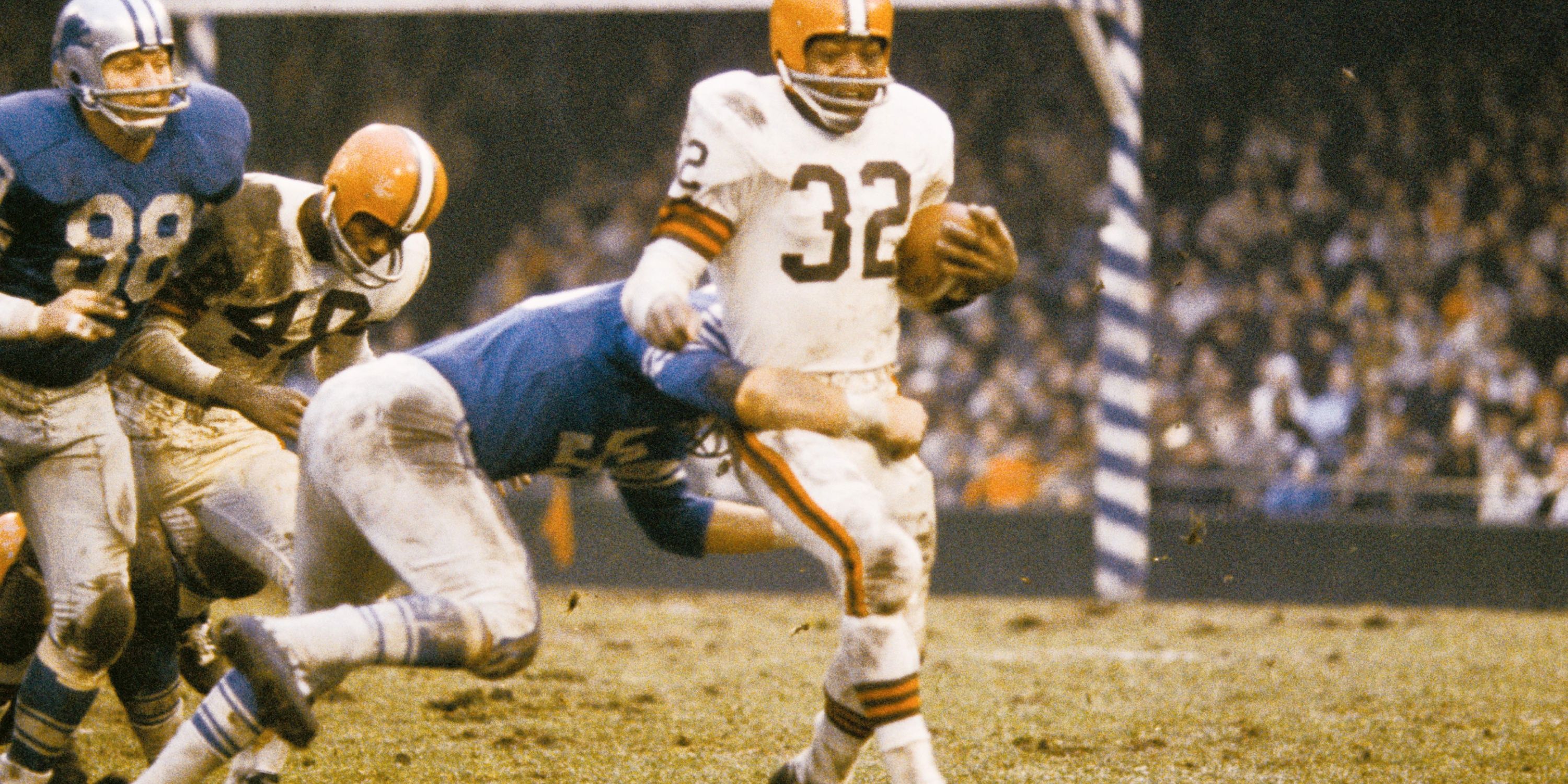
Leave a Reply